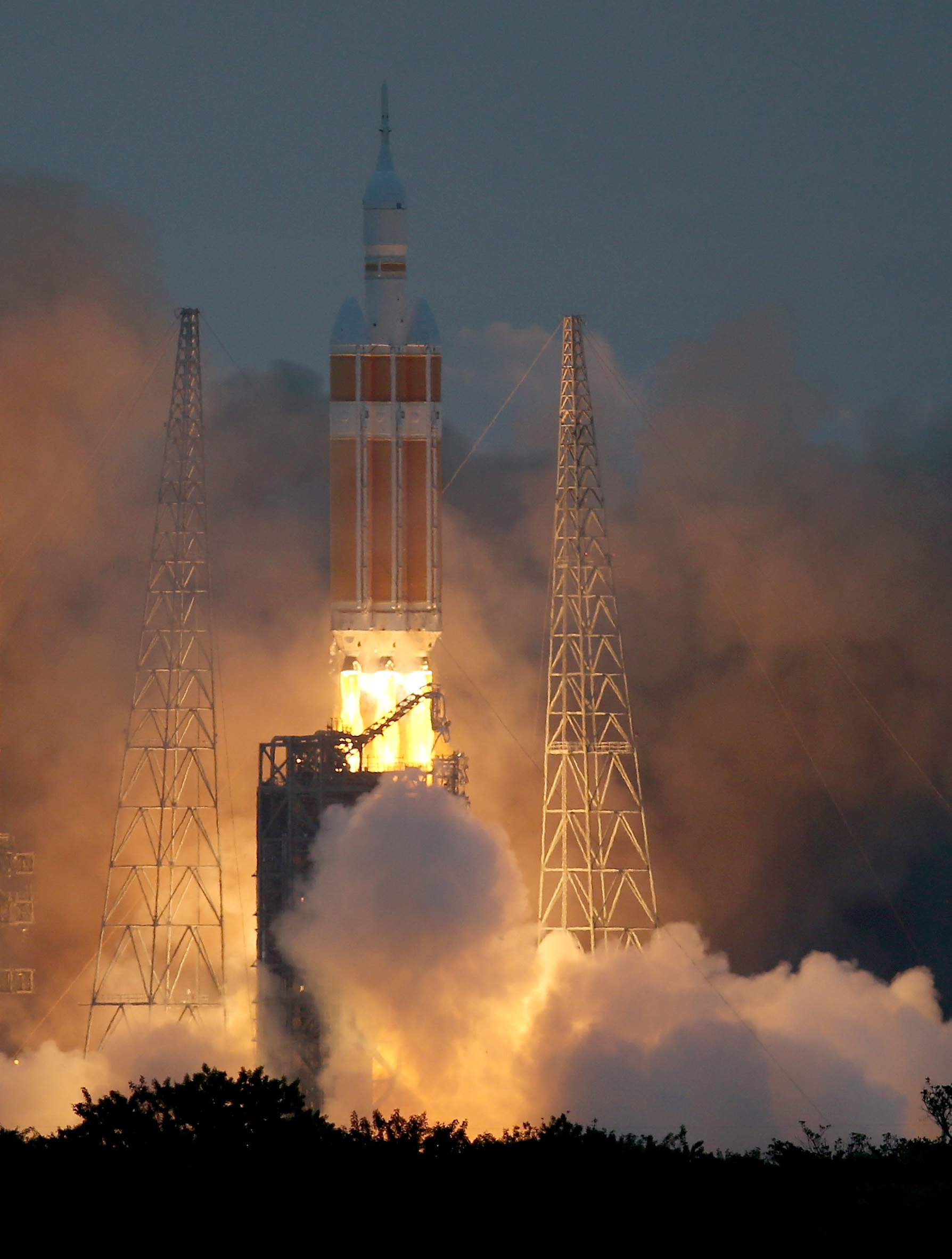GREENBELT, Md. (WUSA9) -- Goddard Space Flight Center in Greenbelt played a critical and mostly unknown role in Orion's mission. Goddard is responsible for all communications with the spacecraft, even when there are no people on board.
"In this particular mission these are all Goddard antennas being used to communicate to and from the spacecraft," says Dr. John Hudiburg, a Mission Systems Engineer with Goddard Space Flight Center.
Orion is a test mission to prepare for future launches. "It's all about data, for engineers and scientists it's about gathering and testing technical data on how well the craft is operated," says Hudiburg. "What temperatures, what pressures, how much heat, what direction it's going, what velocity, all of these are communicated down through radios that the spacecraft have and they are connected to us through antennas both on the ground, on Earth and also satellites that are in space itself."
STORIES ABOUT THE ORION LAUNCH:
It's essential to communicate with Orion, even when it's unmanned. "If we don't get communications, we don't get data. If it's a test with no data, it's a failure. But the good news is everything is working very well," says Hudiburg. Friday's test is important because it will make sure it's safe for humans to operate the next mission. Essentially, the same communication systems are being used now that will be used when the spacecraft has astronauts on board, and those same systems are being tested, including new radios and new types of radio signals.
Most crews at Goddard arrived overnight to prepare for the 7 a.m. launch. It was a "tingly moment" in the Network Integration Control Center, according to Hudiburg, for everyone who has been working on this for the past four years. "It's been a lot of preparations, a lot of simulations, a lot of practice, but ultimately the test comes in the day that the fire and smoke starts happening and you start moving spacecraft into space," says Hudiburg.
Even when the spacecraft lands in the ocean, Goddard is still in constant communication, from start to finish.
As for what's next, Hudiburg says they are expecting a launch around 2017 that will go even further into space and to the moon. The mission with people on board will likely be around the year 2020.
"Those mission require even more fancy computers, more fancy radios that go further and further into space, larger and larger antennas on earth and our networks here at Goddard will all be involved," says Hudiburg. Looking forward even further to the year 2030 is the Mars Mission. "That's going to take even more sophisticated technology," says Hudiburg.
![NASA's Orion Spacecraft Launches Unmanned Test Flight[ID=19939819] ID=19939819](http://www.gannett-cdn.com/-mm-/82dc3d1f463415b9d0525865da3f06e4abdf1010/c=0-418-1788-1946/local/-/media/WUSA/WUSA/2014/12/05/635533634987889703-459985126-10.jpg)


![PHOTOS: Orion launches[ID=19938309] ID=19938309](http://www.gannett-cdn.com/-mm-/1116694d6eb06f3030d8641d3830bf879495be4c/c=86-0-407-274/local/-/media/WUSA/WUSA/2014/12/05/635533601041710793-orion.JPG)
